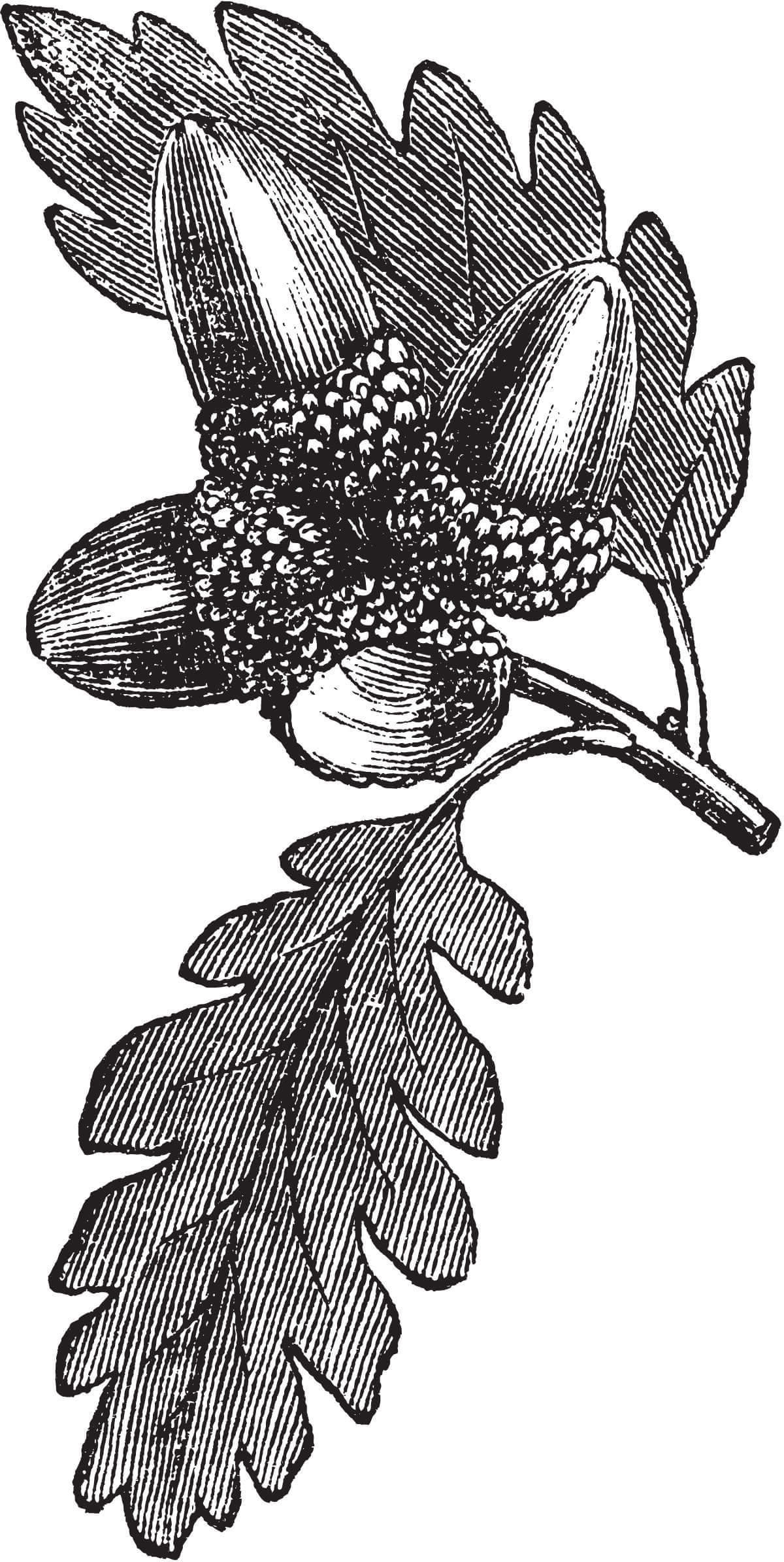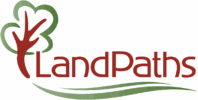What’s It Like to Participate in a Prescribed Burn?
Category: Blog, Community Resilience, Grasslands, Growing Community with Nature, LandPaths Preserves, Ocean Song, Partnerships, Prescribed Burn, Stewardship, Wildfire Fuel Reduction
By LandPaths Staff
October 17, 2023
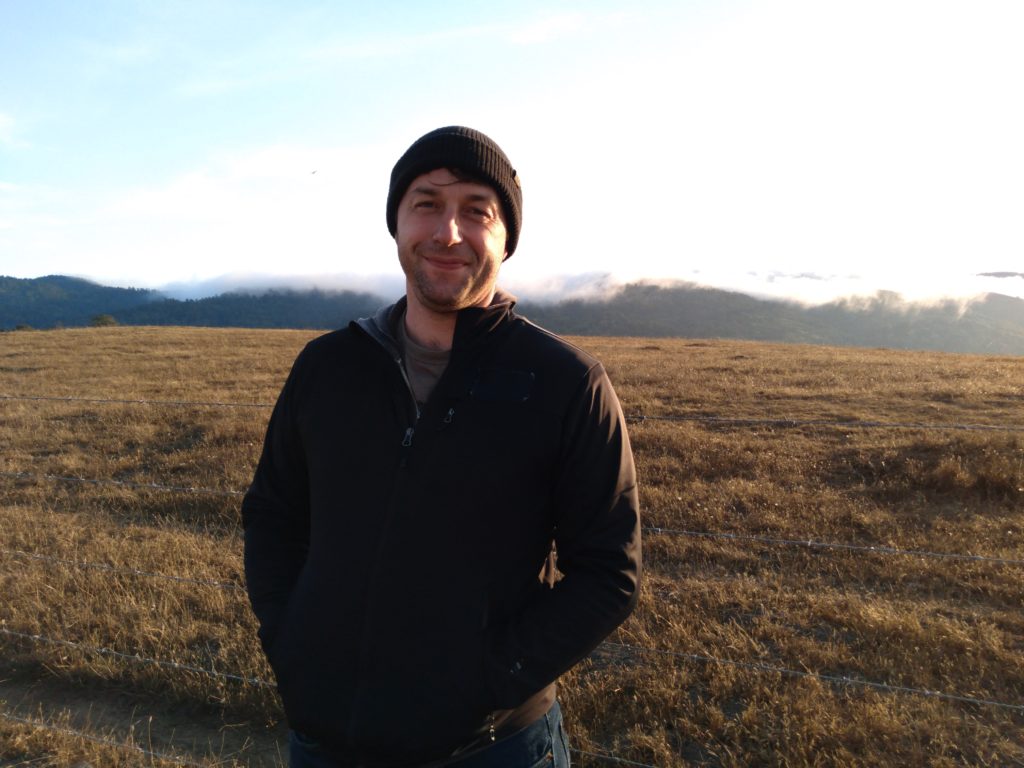
by Miles Sarvis-Wilburn, Stewardship Field Specialist at LandPaths
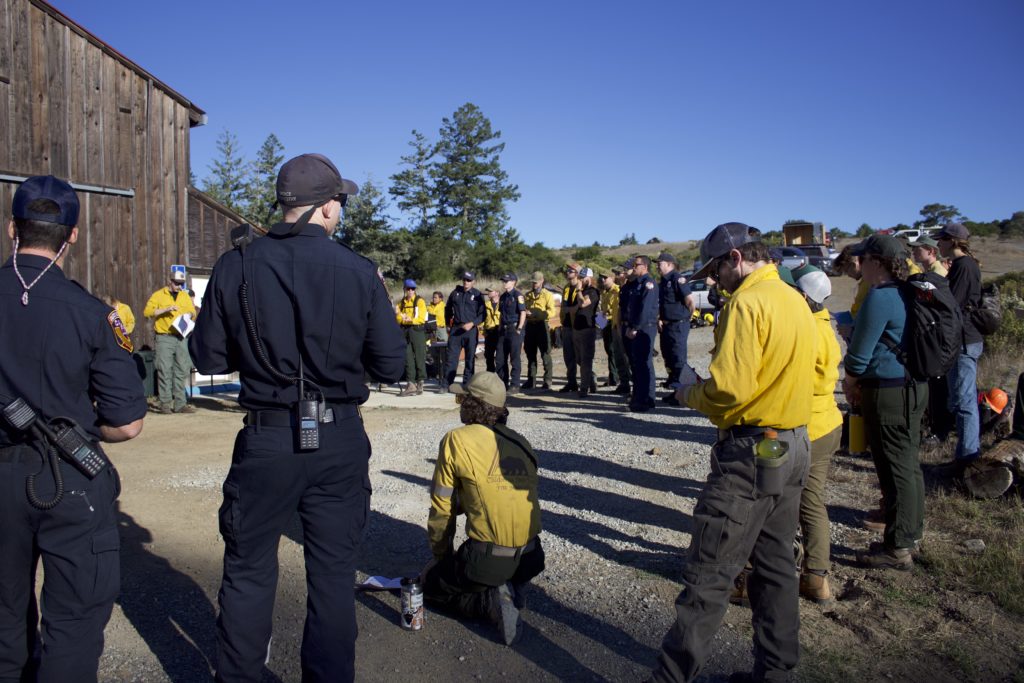
I arrived at LandPaths’ Ocean Song/Myers Preserve at 7:30am, the sun rising over a thick ocean of fog, and opened the gates for our friends at Audubon Canyon Ranch’s Fire Forward program. The steady trickle of vehicles and wildland firefighters continued for an hour with folks milling about the coffee and bagels, donning protective gear, and talking strategy for the day. Our purpose for gathering was to burn twenty-eight acres of coastal prairie, an incredibly valuable habitat, ecological resource, and ecosystem.
Ocean Song/Myers is located along Coleman Valley Road, on a ridge overlooking the Pacific Ocean. This is the ancestral homeland of the Coast Miwok and Southern Pomo peoples since time immemorial; both tribes routinely burn for cultural resources, habitat strength, and hunting grounds. For over 10,000 years this relationship gave rise to fire-adapted ecosystems including the coastal prairie.
To return fire to this land, then, was less an act of innovation and more a return to practices long developed and much needed.
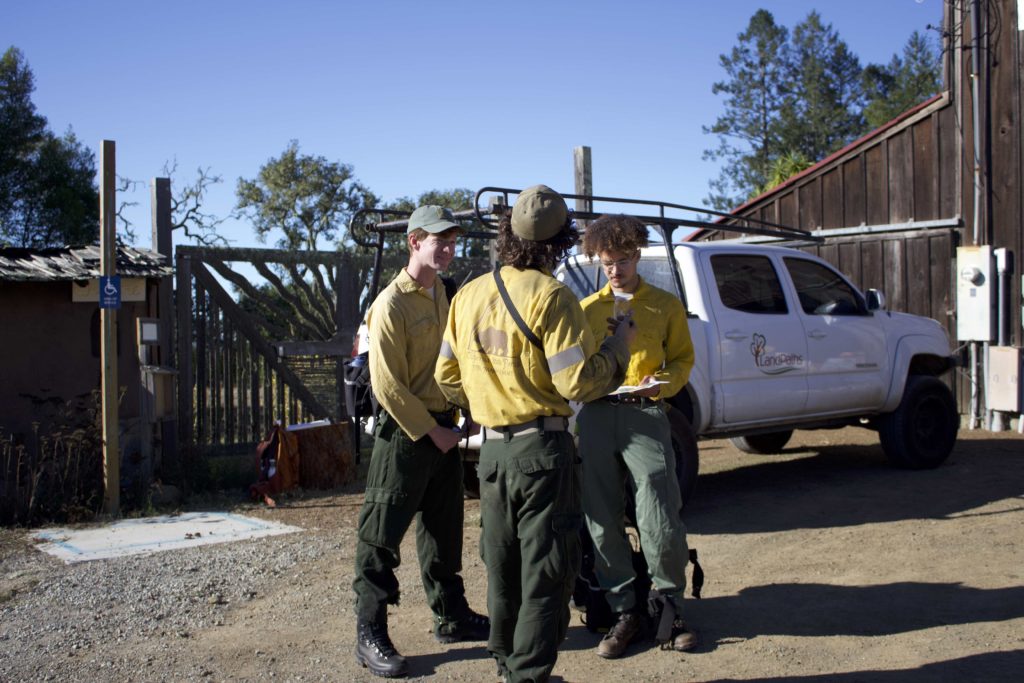
Good Fire
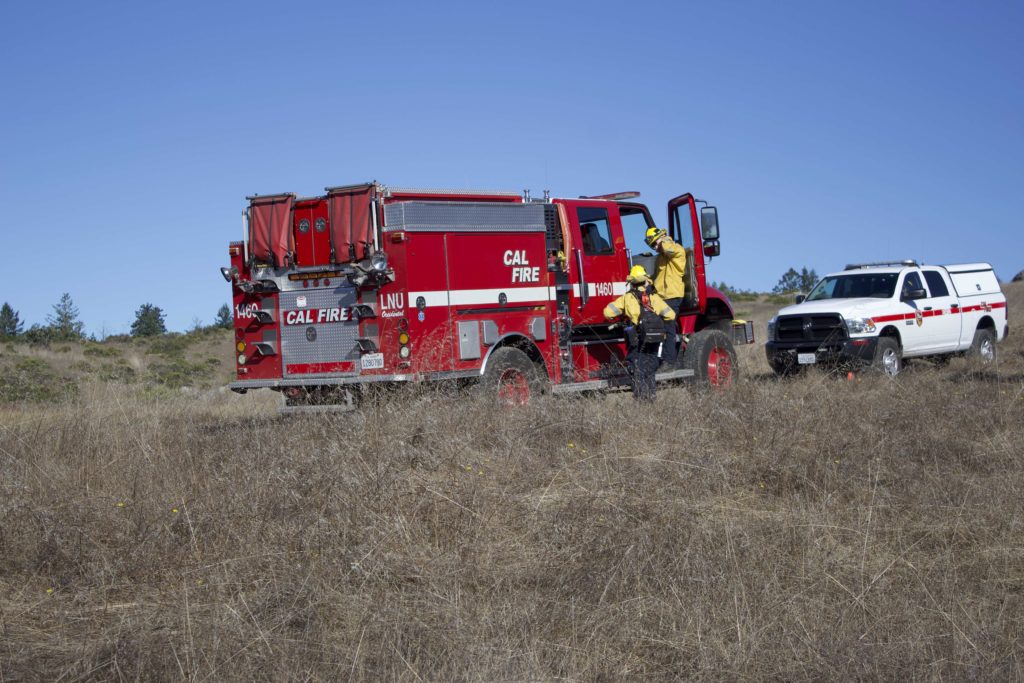
Nearly all of northern California coastal prairie has disappeared, a direct result of development and habitat encroachment. Prescribed fire is an excellent and vital tool in the stewardship toolbox for many things, and facilitating the health of our grasslands is no exception.
Many of our native perennial bunchgrasses are fire adapted, meaning they have deep and strong roots and can take a full burn of their above ground vegetation only to grow again with the coming rains.
The goal of the prescribed burn on October 2 was to put prescribed fire, what we call “good fire,” on the ground for two main purposes. The first was to reduce fuel loading, including invasive grasses, thatch, and forest understory. The second was to reduce Coyote Brush and Douglas Fir encroachment on the coastal prairie.
A Burn Begins
After our strategic orientation and complete safety outline, we started the test fire at around 9:45am to see how the fuels would take and what the winds looked like at different heights. Everything looked good to go so off we went, burning safety zones along the north and east edges of the unit before lighting the interior.
I was fortunate to be able to burn the eastern flank, a welcome activity after having spent so many days with my colleagues prepping the unit. The fire took quickly and within two hours we ceased firing and turned to monitoring and putting water on any places still hot.
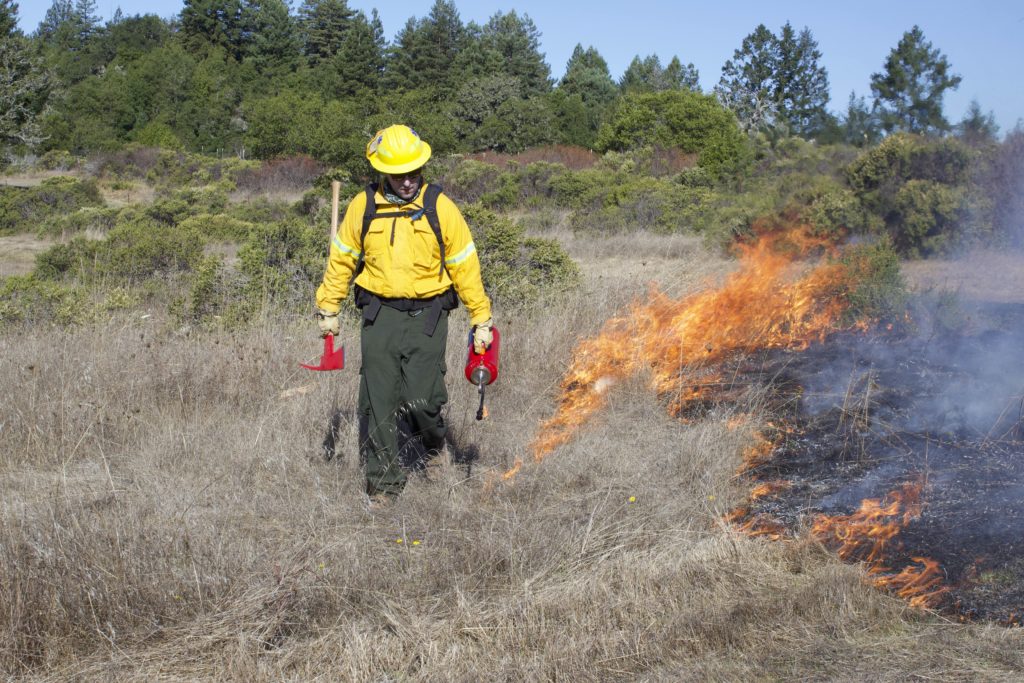
This process is always a long one as we want to be sure the unit is cool before wrapping up; it wasn’t until 4:30pm that we stopped, turned off the water pump, and hiked back to the tables. The crew was dirty, many of us dark with ash, but smiles abounded. It was a pleasure to see so many familiar faces and to meet folks from all around the county. It was a quick and effective burn, successful on all levels. To put it plainly, the vibe was good.
Community Care
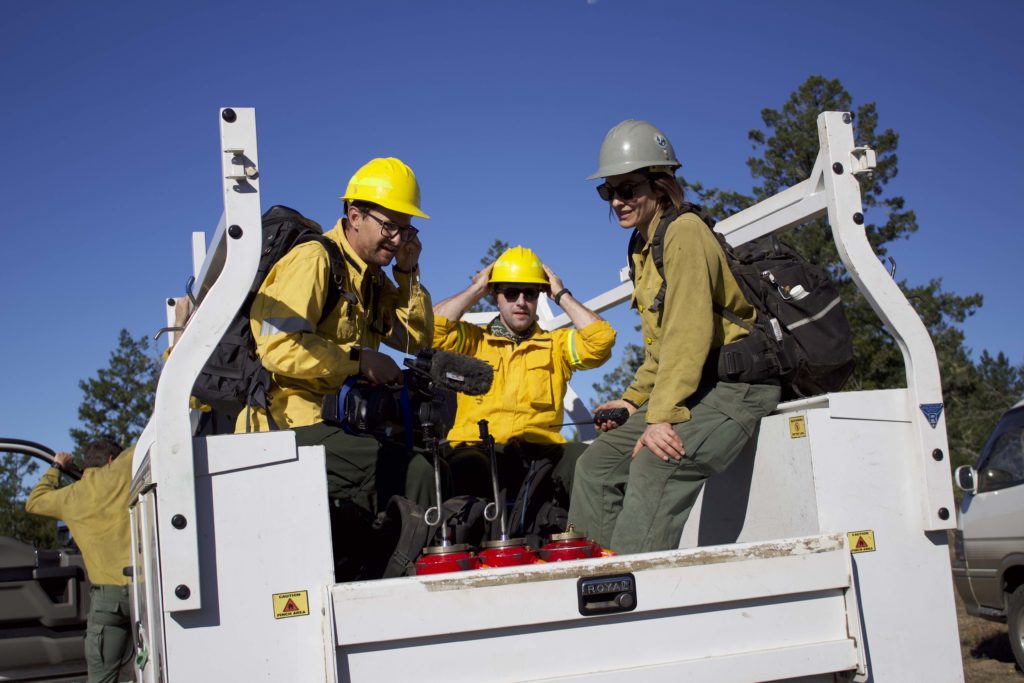
We held our after-action review burritos in hand, though mine lasted barely a minute, and everyone agreed that the weather shined kindly upon us as the wind had carried our smoke up and out to sea. With no negative air quality effects on our neighbors coupled with success on our ecological goals, it was a mighty day indeed.
Events like this make it easy to be pleased to be a part of the community around the LandPaths’ stewardship team, a team that continually strives to act with respect and integrity as we care for and tend to the land.
And a big thank you to Audubon Canyon Ranch’s Fire Forward for their ongoing leadership in this domain, and to CalFire and Occidental Fire for supporting our operations. It’s wonderful to see so many organizations and governmental entities coming together to return fire to the land, especially in such valuable and scarce habitats.
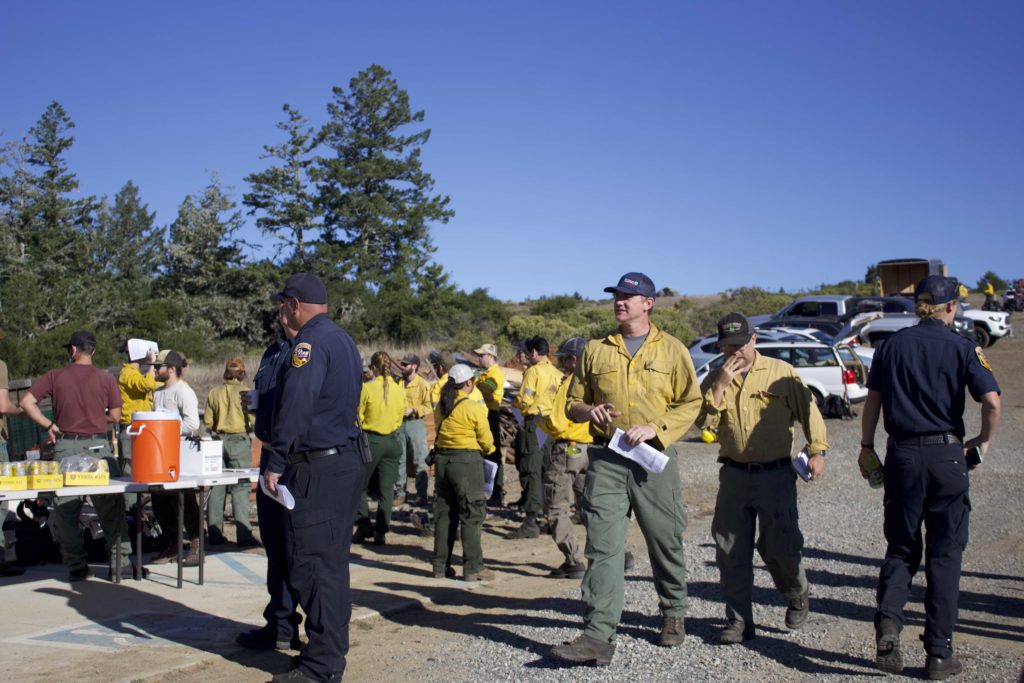
Miles Sarvis-Wilburn, Stewardship Field Specialist
" Nearly all of northern California coastal prairie has disappeared, a direct result of development and habitat encroachment. Prescribed fire is an excellent and vital tool in the stewardship toolbox for many things, and facilitating the health of our grasslands is no exception. "
